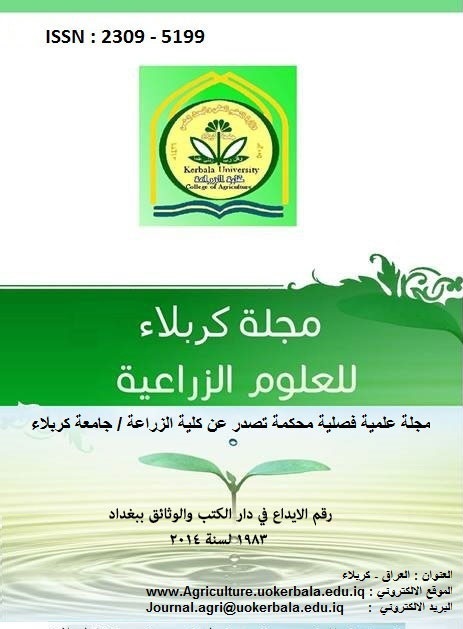Extraction of two local types of cowpea (Vigna unguiculata L) proteins and study of its functional properties
Ethar Z. Naji
DOI:
https://doi.org/10.59658/jkas.v4i1.93Abstract
A study of the chemical composition of the protein isolates of two types, white and red cowpea, (obtained from the local markets in Baghdad province), which have been extracted at pH 9.5 and sedimented at 4.5, showed a higher percentage of each of the moisture, ash, protein, and low carbohydrate for red cowpea protein isolate, reached 7.12%, 2.31%, 82.21% and 8.36% compared with 6.22% , 1.57% , 79.58% and 12.63% for white cowpea protein isolate respectively, the protein solubility at different pH values ranged between 2-9, showed a lowest solubility at pH 5 while the highest at pH 9, with the values of 4.82% , 2.99% at pH 5, 23.93% , 28.24% at pH 2, and 52.15%, 51.20% at pH 9, for white and red cowpea isolates respectively, the study showed also a higher water holding capacity and lowest oil holding capacity for red cowpea protein isolate, reaching 2.05 g water/ g protein compared with 1.39 gm water/ gm protein, and 1.68, 1.53 g fat/ g protein for white and red cowpea isolates respectively. A study of the functional properties of the protein isolates at pH values 3-9, showed that a lowest were at pH 5, they were for emulsifying index 12.00% , 15. 60%, emulsion stability 15.4% , 12.6%, foaming ability 18.19% , 14.99%, and foam stability 14.89% , 12.23% for white and red cowpea protein isolate respectively, while the maximum was at pH 9 reaching, emulsifying index 80.76%, 75.41%, emulsion stability 80.9% , 90.65, foaming ability 85.43%, 83.33%, and foam stability 70.54%, 66.90% for white and red protein isolate respectively, using different concentrations ranged from 2-20 %, showed that the lowest concentration needed to form a gel was 14% of the white cowpea protein isolate, and 12% for the red one, and not configure a static gel, unless the concentration was 16% for the tow samples of the study.
Downloads
Published
How to Cite
Issue
Section
License
Copyright (c) 2017 Copyright (c) 2024 is the Author's article. Published by the Journal of Kerbala for Agricultural Sciences under a CC BY 4.0 license

This work is licensed under a Creative Commons Attribution 4.0 International License.
Licensing Terms
All articles are published under a Creative Commons License and will be directed to the Creative Commons Attribution 4.0 International License (CC BY 4.0) That permits use, distribution, and reproduction in any medium, provided the original work is properly cited. This license also allows the work to be used for commercial purposes.
Use by both non-commercial and commercial users
This content is licensed under a Creative Commons Attribution 4.0 International (CC BY 4.0) license, permitting use by both non-commercial and commercial users. Individual users may access, download, copy, display, and redistribute the articles to colleagues, as well as adapt, translate, and text- and data-mine the content, subject to the following conditions:
- The author's moral rights, including the right of attribution and the right to protect their work from derogatory treatment, are respected.
- Where content in the article is identified as belonging to a third party, users must ensure that any reuse complies with the copyright policies of the owner of that content.
- If the article content is reused for research or educational purposes, users should maintain a link to the appropriate bibliographic citation, including the DOI and a link to the published version on the journal's website.

